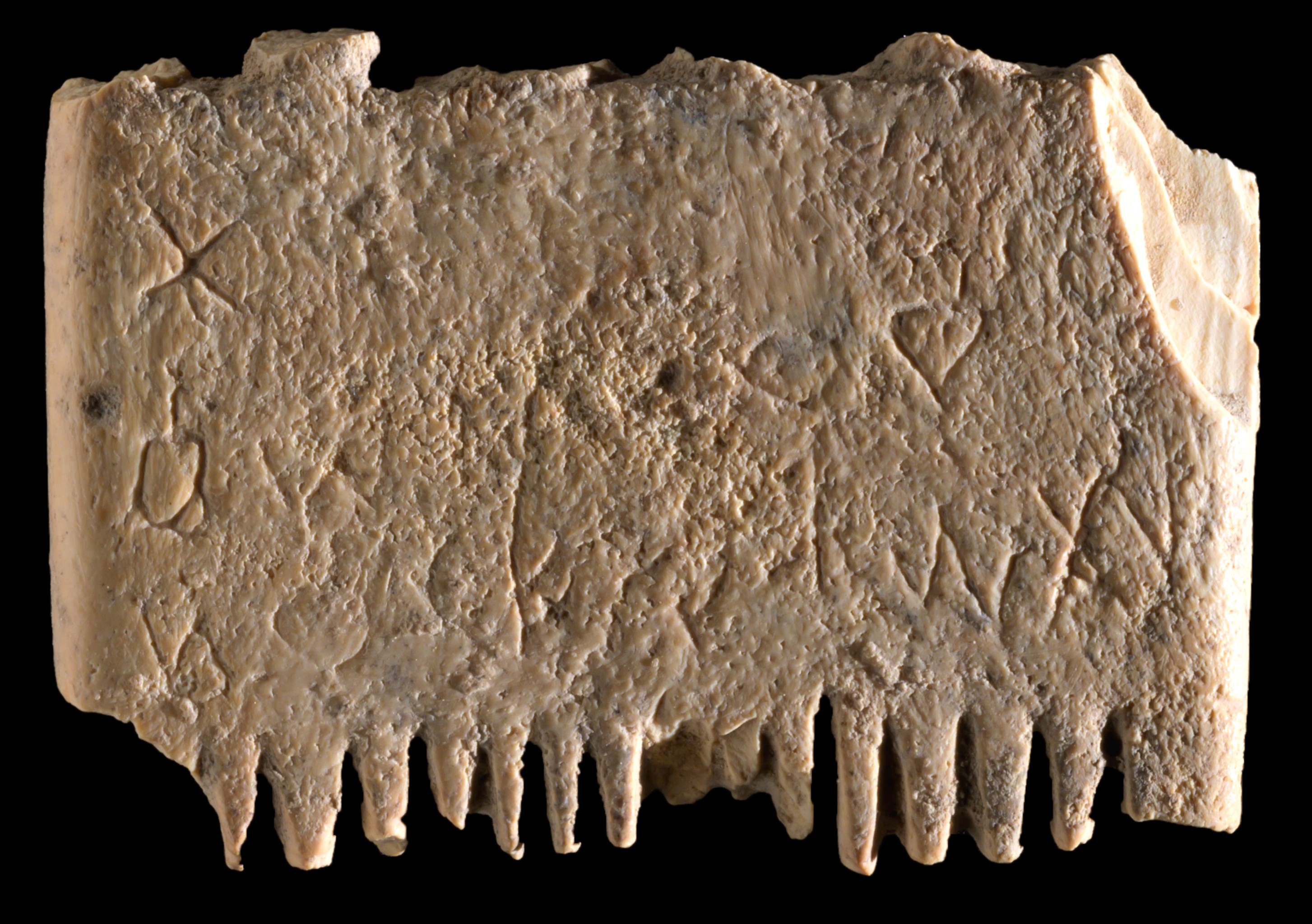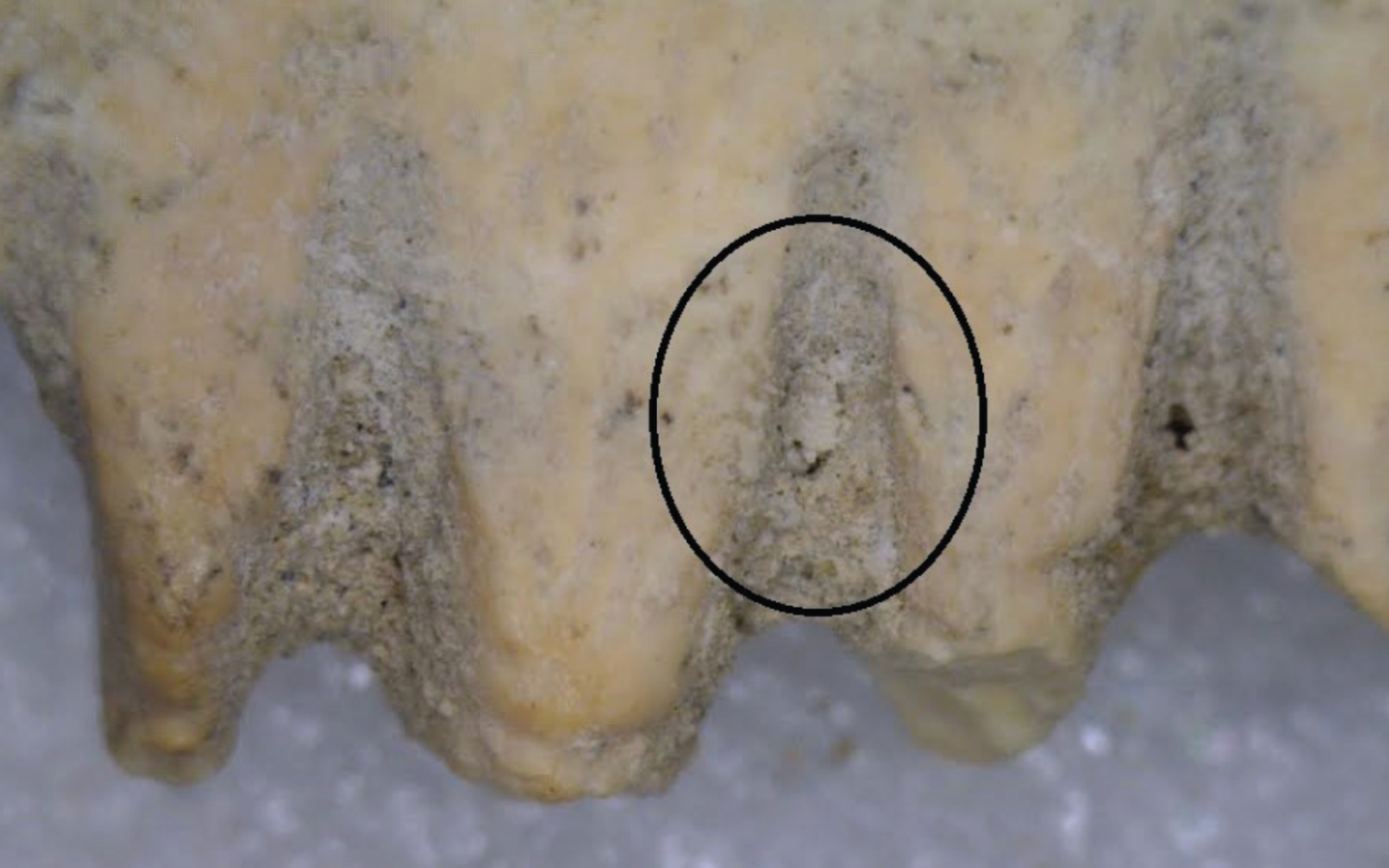
Ivory Comb Information
The Ivory Comb and the History of the Alphabet
So much of our lives revolve around our ability to communicate through written word, from books to advertisements, and even this very article. Regardless of the language in question, letters serve as the primary building blocks of our communication.
But where does the alphabet come from?
Alphabetic writing originated in the Near East among Semitic-speaking people. “Semitic” is an umbrella term that refers to languages such Hebrew, Aramaic, and Arabic. Early Semitic alphabets were pictographic, and the characters often represented the initial sound of a specific object. For example, the Semitic character “qof” was designed to look like a monkey, one of the character's meanings. Eventually, pictographic depictions evolved into a script that resembles modern alphabets.
One of the earliest Semitic alphabets was the written language of the Canaanites. This script provided the foundation for other Semitic languages, including Hebrew. Because of this, scholars have attempted to map the evolution of the Canaanite language, to better understand the history of the Semitic language group as a whole.
Mapping the Canaanite language had proven to be difficult until the discovery of the ivory comb. A full inscription predating the 13th century did not exist prior to the uncovering of this rare artifact featuring the first complete sentence written in Canaanite script. The find has been embraced by the biblical archaeology community as a welcome insight into the development of written language in Palestine.
Where was the comb found?
The comb was discovered at the site of Lachish in Israel during an excavation led
by the Hebrew University of Jerusalem and Southern Adventist University.
Lachish was an important Canaanite city-state that was destroyed during the establishment
of the Judean kingdom when a new city was built on top of it. The site was subsequently
destroyed and rebuilt following the Assyrian and Babylonian invasions.
Excavations at the site have revealed a multitude of important finds, including the ivory comb. Found among the remains of the Babylonian destruction, the comb was unearthed by Katherine Hesler, an archaeology student at Southern. Early analyses of the comb revealed that the object was much older than its surroundings and had likely been displaced over the years. It wasn’t until 2021, five years after the initial excavation, that Israel virologist Madeleine Mumcuoglu PhD, noticed a faint inscription on the comb's surface. This inscription changed everything.
What does the comb look like?
The comb is quite small, measuring 3.66 cm wide and 2.51 cm tall. There are “teeth” on both sides of the comb. Though broken, their bases are still visible. The six thick teeth were used for detangling hair, while the fourteen fine teeth were for rooting out lice and eggs.
Elemental and molecular analyses of the comb, as well as microscopical surface studies,
reveal that the comb is made of genuine elephant ivory. There were no elephants in
Canaan during ancient times, so the comb must have been imported from Egypt. Egyptian
ivory combs were widespread in the Levant during the Late Bronze Age. Many combs bore
engravings of elaborate scenes, but very few bore inscriptions.
What does the inscription say?
Seventeen tiny inscribed letters assemble into seven words which read “may this tusk root out the hair of lice and beard.” All together, it is the oldest reliable sentence written in Canaanite script ever found. An in-depth analysis of the individual characters, when compared to other known Canaanite inscriptions, date the comb to the late Middle Bronze Age (1700-1550 BCE). Elements of the script’s pictographic origins are still visible, which tells scholars that the inscription contains an early iteration of Semitic characters. Even the vocabulary and grammar echo later Semitic languages, such as Hebrew and Arabic.
Proof of Purpose

Interestingly, scientists have discovered the remains of a louse head on the second tooth of the comb. This tells scholars that the comb did its job!
The Ivory Comb and Its Significance
So, why are scholars making such a fuss over one tiny lice comb?
The comb is significant because it is the first time an entire verbal sentence written
in the Canaanite dialect of Lachish has been found. This has enabled cross-comparisons
with other known inscriptions from later periods.
It is also the first Canaanite inscription found on a carbon-14 dateable object. This
means that, in theory, scientists can use carbon-14 dating to help narrow down the
date of the comb. A sample from the comb was initially sent to Oxford University for
radiometric testing but, unfortunately, did not contain enough carbon for the proper
tests.
The inscription is also important because it sheds light on aspects of everyday life, such as hair care and grooming. Additionally, it speaks to the level of literacy in Bronze-Age Canaan. The fact that the engraver was able to skillfully and clearly communicate a written language implies that literacy was widespread, not just among the elite but also the average people as well. Taken in conjunction with other finds, the comb speaks to the central role Lachish played in the development of the alphabet.
Sources for information on this page include:
A Canaanite’s Wish to Eradicate Lice on an Inscribed Ivory Comb from Lachish by Daniel Vainstub, Madeleine Mumcuoglu, Michael G. Hasel, Katherine M. Hesler, Miriam Lavi, Rivka Rabinovich, Yuval Goren, and Yosef Garfinkel. Jerusalem Journal of Archaeology 2: 76–119, 2022.